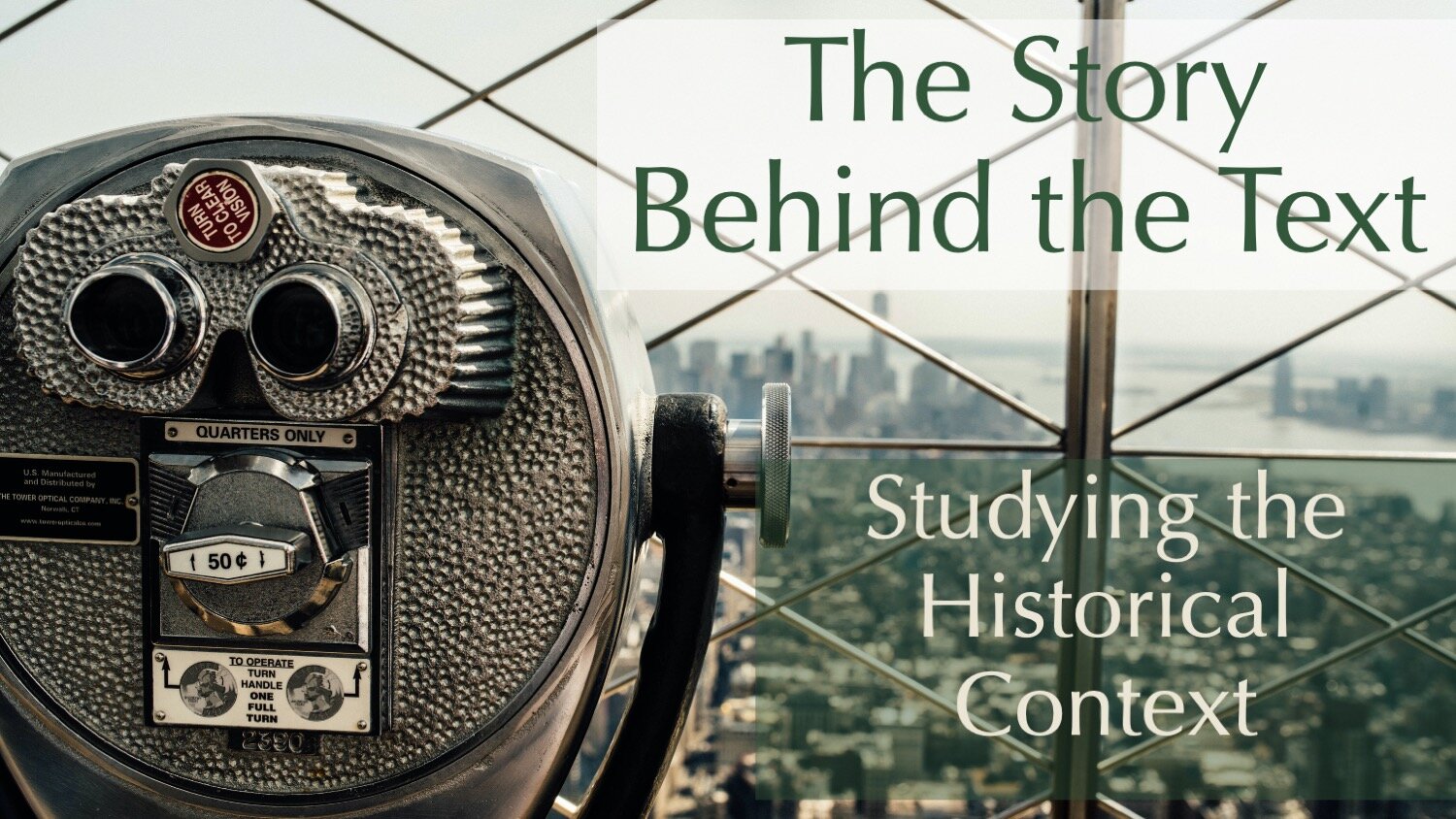The Story Behind the Text
On a Wednesday evening sometime in 1963, a group of ladies were in the church kitchen cleaning up after the monthly pot-luck when my Mom (the new pastor’s wife) overheard them talking about a little boy who was deathly ill. They mentioned the anguish of the parents, the befuddlement of the doctors over the mysterious illness, and the grim prognosis for the little tyke. It seemed that the child might not even survive the week. Mom, dutifully eager to help my Dad cover all the ministry needs in their new parish, joined the conversation with a flood of questions: What was the boy’s name? Who were his parents? Were they members of the church? What hospital was he in? When could the pastor make a visit? The group of ladies blushed sheepishly and confessed: they had been talking about the current storyline of their favourite soap opera!
Not knowing the story behind a text can be like walking blindly into the middle of a conversation. There’s a very good chance you could miss the meaning altogether. This is why we begin to gain an understanding the big picture of a biblical text by studying its historical context.
The list of items to study here could be quite long, but I will reduce it to four major categories:
Author: Who wrote it?
First, we should do our best to get to know the person who wrote the text. Who was he and what was his story? What was his background and what motivated him? What was his relationship with those to whom he was writing? Where was he at the time of the writing, and what was going on in his life? Did he write any other books in the Bible? The bedrock principle of good biblical interpretation is to decipher just what the author intended to say. To do this, we need to know the author as well as we can.
Recipients: Who read it?
Next, we need to learn all we can about the original intended readers of the text. Did the author have in mind an entire nation, a small community, or something in between? Where did they live? What was their life like? How did they see the world, their place in it, and God’s activity in their lives? What were their strengths and weaknesses, challenges and triumphs, problems and questions that the author desired to address in this text? We should always seek to understand what the text had to say to them before we try to discern what it says to us. Because of this, knowing the recipients is essential.
Occasion: What provoked it?
The author and the recipients come together in the occasion for a text. Here we want to ask, “What event, problem, or question led the author to write these words?” Was it the author’s initiative or the recipients’ need? Was the text written to address a theological error or moral sin, or was it written to offer encouragement and affirmation? What historical circumstances surrounding this text might help us to understand how these words might have been understood in their original setting? Exploring the occasion for the text will help us to understand what motivated the author to write, and what the author was hoping the text might accomplish.
Culture: What nuances coloured it?
Historical events and circumstances may provide the action for the story behind the text, but culture provides the nuance. Significant cultural understanding could include anything from the prevailing worldview (Hellenistic, Roman, Persian, etc.) surrounding the author and recipients to specific practices and customs (human sacrifice, slavery, family relationships, etc.) that might colour the original impact of a particular text. Be careful not to read the Scriptures as if they were written in and to our 21st-Century cultural context, without first understanding how they would be understood in the context in which they were written.
Sources: Where do you find the “story behind the text?”
None of us has unlimited time to rummage about in ancient libraries for clues about the story behind the text. Fortunately, we have a wealth of information about the historical background of the Bible available to us in the English-speaking world. Here are three places, readily available to most of us in some form, where we might find what we need:
Study Bible Introductions – Every good study Bible includes a 1- or 2-page introduction to each book of the Bible. These introductions may not provide everything you need, but they are a good place to start.
Bible Dictionaries and Encyclopedias – Search these sources topically to find articles related to the author, the recipients, the places and the customs related to your text.
Commentary Introductions – Don’t just skip to the verse-by-verse study in your favourite commentary. Read the “introduction” to the book you are studying. Here you will find summaries of the key issues scholars have found related to the historical background of the book.
The step of discovering the story behind the text may take you an hour or two early in your study for a sermon, but it will pay rich dividends in terms of insight and understanding as you continue your study and confidence as you proclaim a Gospel message from the text. Next in our “big picture study” is the literary context, or the “story around the text”


